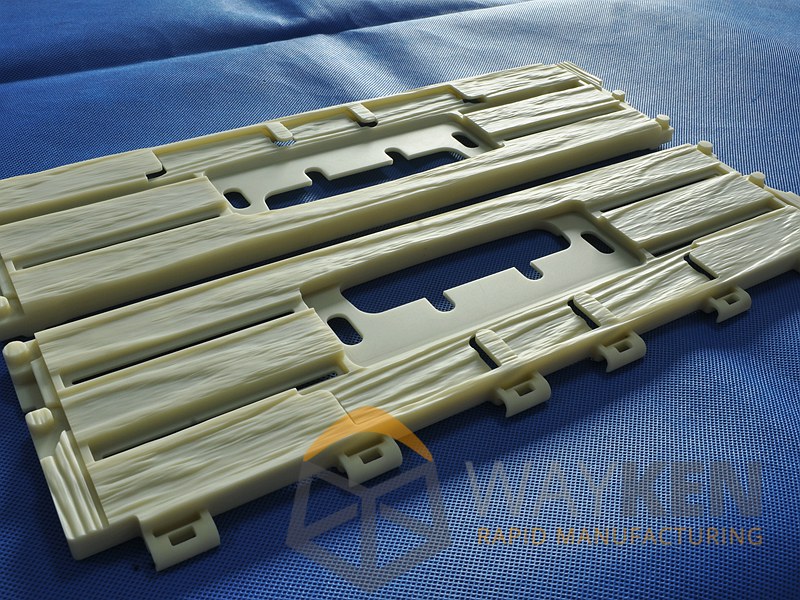Manufacturing is one area that upcoming startups and companies always find it hard to rest their foot. There used to be only two options — either you can manufacture in thousands or not manufacture at all. Of course, we are not talking about medical industries or anything related, where it has been customary to do a lower volume first before manufacturing the complete set of products for commercial purpose. Because the world of manufacturing was like this, many startups have suffered — as they could not understand how a product would perform in the real market.

The Solution — Low Volume Manufacturing
It was then what is now called the Low Volume Manufacturing made its entry into the world of manufacturing and industries, offering many benefits in the long run. On a normal day, Low Volume Manufacturing would help thousands of companies to eradicate the necessity of manufacturing in thousands and spending lots of money on that part. Instead, a company would be able to understand the market response, analyze results and even optimize the product for a better reach and satisfaction ratio. This is one of the reasons why Low Volume Manufacturing is considered one of the future pillars of mass production.
The Good Things about Low Volume Manufacturing
The concept of Low Volume Manufacturing is understood from the name itself. In this scenario, you are not compelled to manufacture a particular product in thousands. That is if you want to have just a few samples of the product — say 50, 100 or 1000 —, you can easily do that. In other words, you don’t have to waste the 9000 product units just because the manufacturing company has a minimum limit of 10000. On another day, you don’t have to wait Years for the full production to be complete and deliver the units to customers. In a holistic perspective, Low Volume Manufacturing is quite convenient for small businesses.
- The Freedom of Flexibility and to Optimize the Design
Flexibility is another area where Low Volume Manufacturing can help your product. Let’s take this scenario: your company has designed an innovative, portable gadget that makes life easier. But, you’re not sure about the public response. At this point, it doesn’t seem practical to manufacture 10000 or 100000 units and test all of them. Instead, what you can do is manufacturing around 1000 units, distributing them across a diverse community of users and getting the response. This way, you can also optimize the design of the product so that it has the best impact when launched publicly.
- Enhancing Delivery Speed and Optimization
Low Volume Manufacturing is also seen as a method that can enhance how quickly you deliver products to customers. Of course, for this to happen, you should be assigning the Low Volume Manufacturing projects to trusted companies like WayKen Rapid. Take this scenario: you already have 1000 orders of the product, but you are not able to deliver them because the whole manufacturing project was of 10000 and the factory hasn’t completed that. This won’t happen if you’ve chosen an efficient Low Volume Manufacturing provider like the above-mentioned.
Despite having a lot of advantages for an upcoming company, Low Volume Manufacturing faces some challenges as well.
Low Volume Manufacturing — Potential Challenges Ahead
First and foremost, Low Volume Manufacturing has to address the issue that is common in every scenario of product manufacturing — the fight between quality and affordability. Thanks to the help of efficient tech, it has become somewhat possible to overcome the dilemma. Currently, there are many providers who offer a rather unparalleled quality but keep the prices within a limit. The best part is that you don’t have to wait for months to get the production process to be complete, either.
Another issue that is common has to deal with an accuracy of the design. This, however, can be overcome by a bunch of high-end machinery by CNC machining services that use computerized manufacturing techniques. Most of the popular and trusted Low Volume Manufacturing providers have already shifted to the high-end model, where they have the best hardware for taking care of various rapid manufacturing techniques, like CNC and Injection Molding. Of course, it all requires the help of a well-designed prototype design and the talent of engineers.
Upcoming Challenges in Low Volume Manufacturing for Better Quality
These challenges are the same reason why you should go for a dedicated Low Volume Manufacturing provider, who actually focuses on manufacturing products at a lower volume. Such a company would have optimized their machinery and manufacturing processes to enhance cost-per-unit. So, they would not have to compromise the quality of your product, which is great. So, instead of requesting a typical manufacturing company to restrict the production into a particular level, you must approach an expert in the industry. Not only will you receive a convincing quote but also there won’t be any compromise in quality, which is great.
The point here is that you must have the best manufacturing results from the best manufacturing company out there. Depending on the requirements, market scenarios and the community of users you are catering to, the Low Volume Manufacturing provider can be chosen. If you don’t, things may end up in trouble.
The Bottom Line
After discussing the different aspects of Low Volume Manufacturing, we’re not really doubtful whether it is the future of tomorrow. As far as upcoming startups with better strategy and small budget are concerned, it is indeed a great thing to go for Low Volume Manufacturing instead of wasting a lot of money creating 10 or 20 thousands of units. Given that you have chosen one of the best Low Volume Manufacturing providers, things will be affordable and reasonable at the same time.